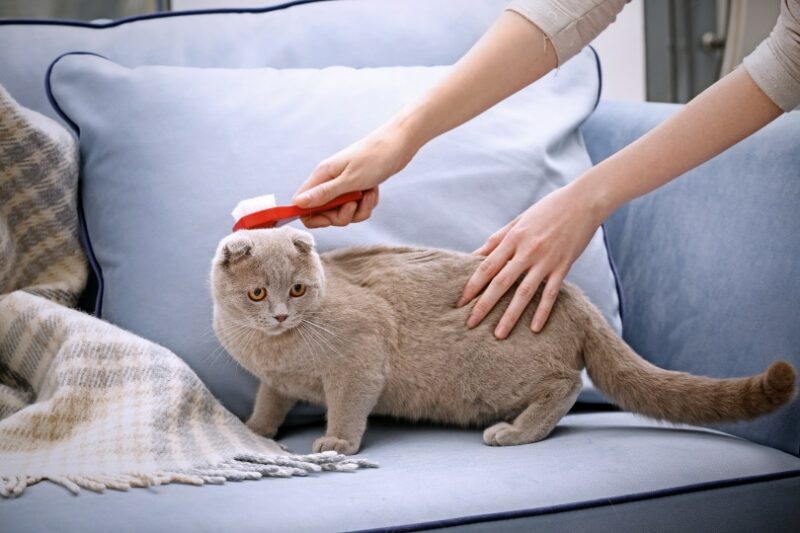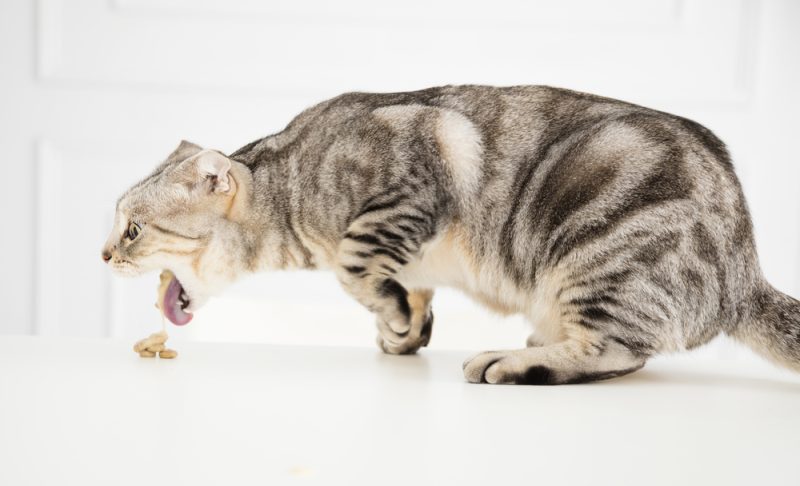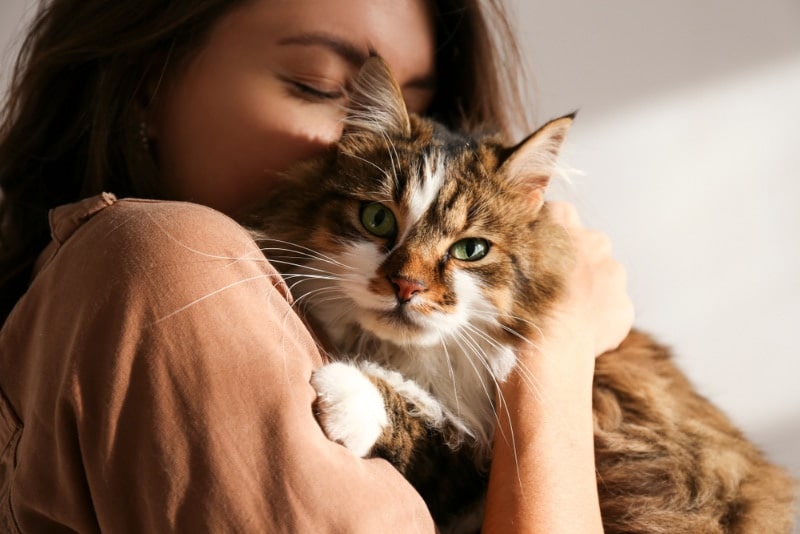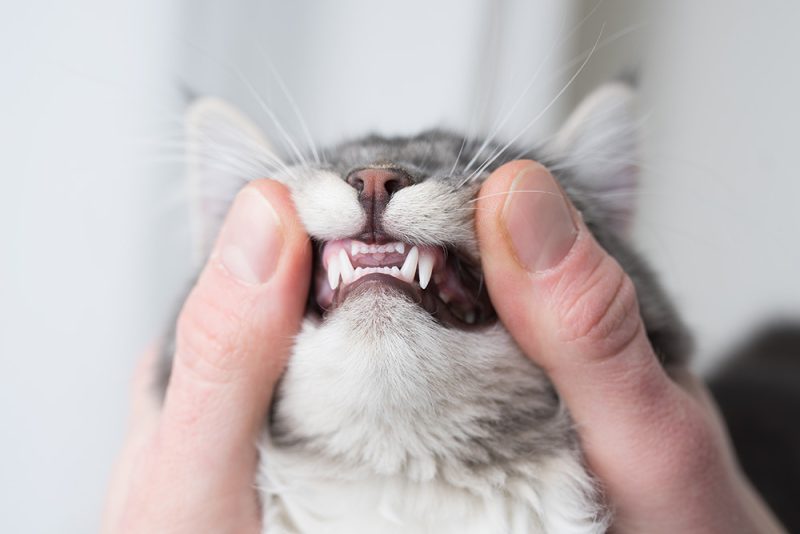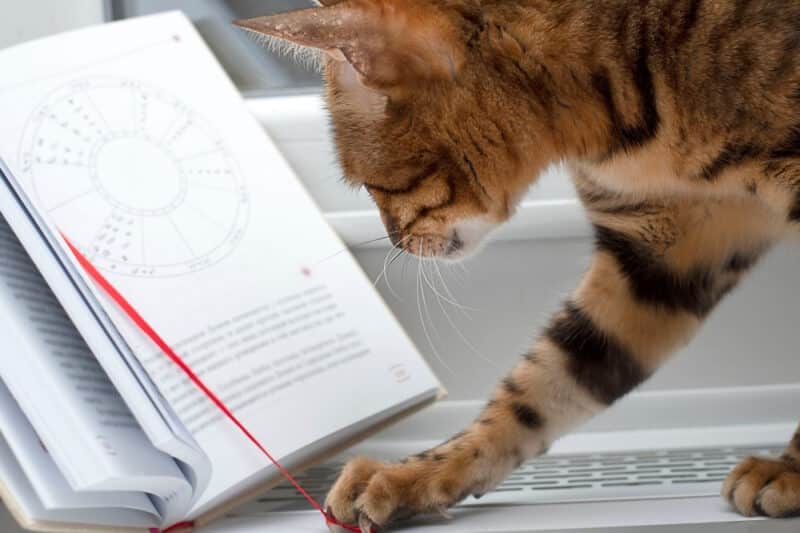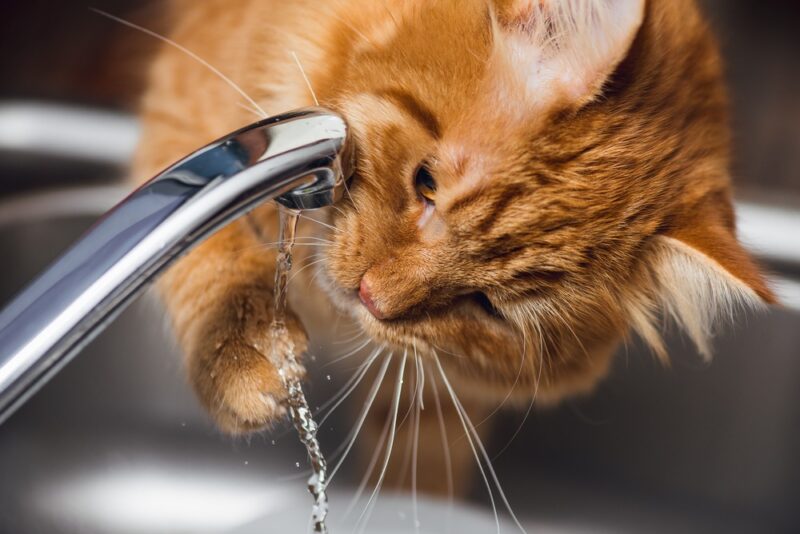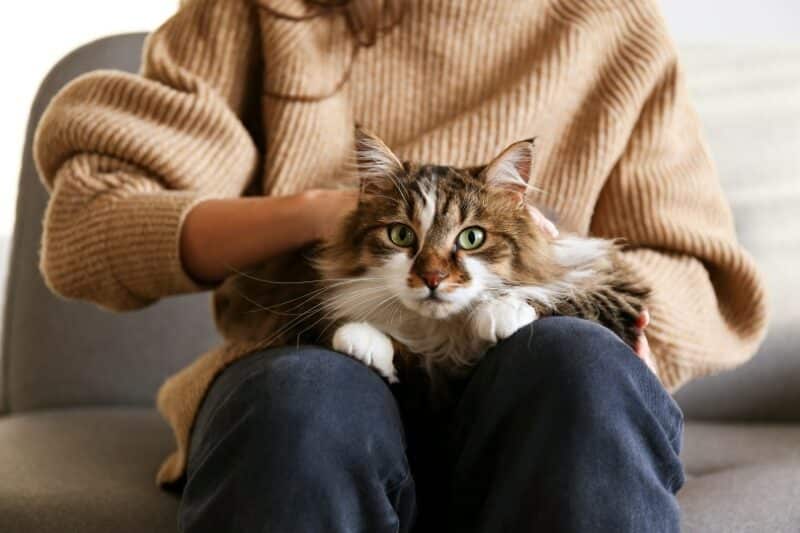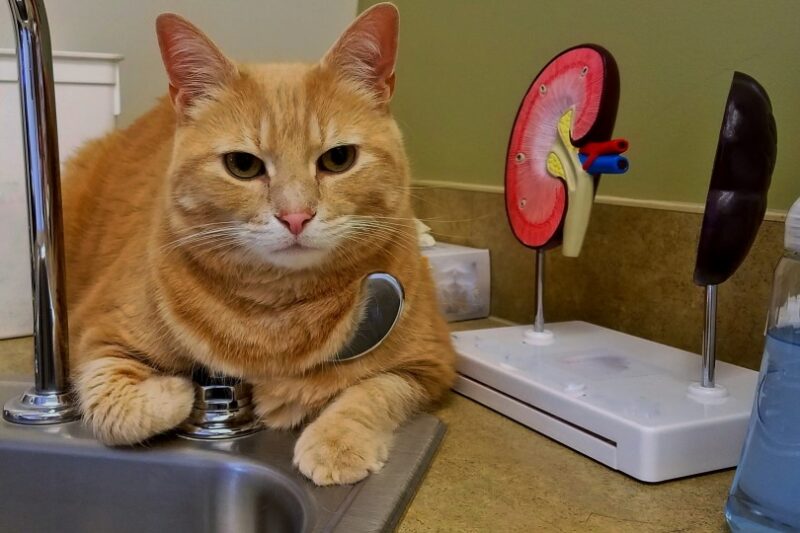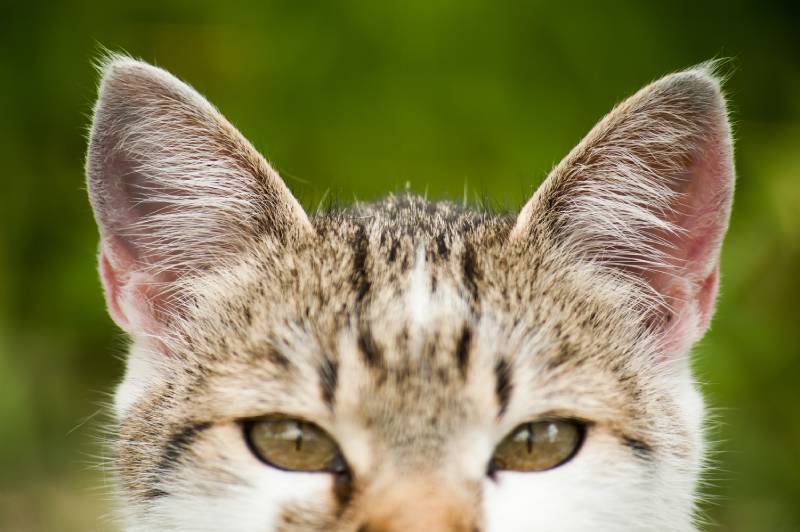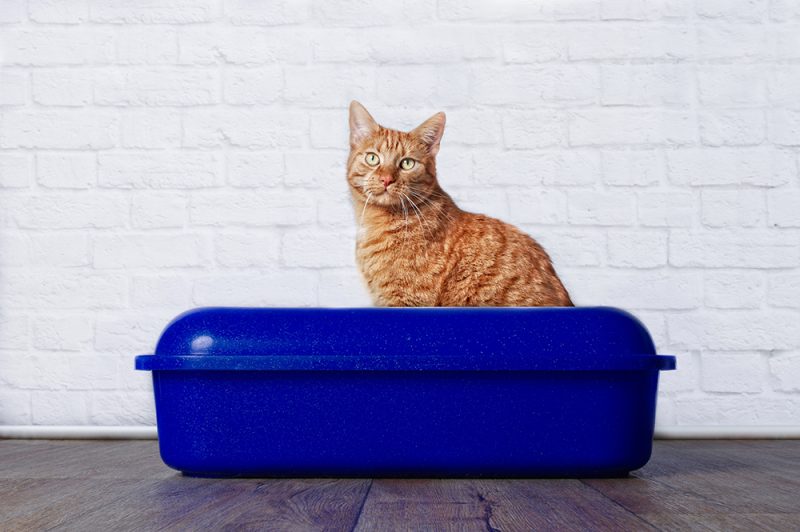A lot of cat owners don’t think about brushing their cats (after all, cats are pretty excellent at grooming themselves), but it’s a good idea to do this. Not only does it help kitty stay tangle- and mat-free, but it offers other benefits as well. And if you have a pet that’s older or disabled, they might have a more difficult time grooming and could appreciate a helping hand.
However, the problem with brushing your cat is that some cats hate it. If you know brushing your pet is good for them but your pet wants nothing to do with the act, what do you do? You follow the step-by-step guide below! With the following steps, you should be able to make brushing your cat much easier on both of you.

Benefits of Brushing Your Cat
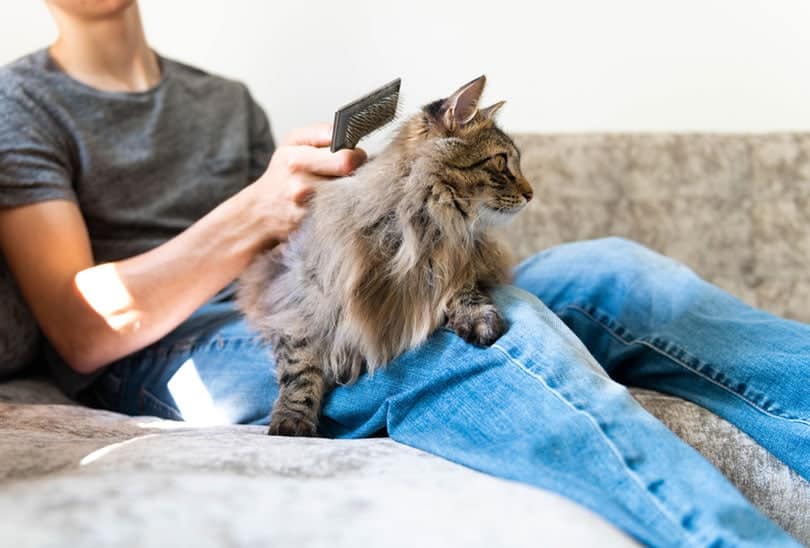
Getting rid of mats or keeping your pet’s coat tangle-free aren’t the only benefits of brushing your cat. There are many other reasons you’ll want to engage in a good weekly brushing.
- Bonding between you and your pet
- The removal of dead skin and hair
- A reduction in shedding
- Getting rid of dirt
- Stimulating blood flow and natural oils to keep your pet’s coat looking healthy
- Reducing the chances of hairballs
That’s a wealth of excellent reasons to get your cat to enjoy being brushed!

How to Brush a Cat That Doesn’t Want to Be Brushed
Now that you know why you should be brushing your cat, here’s where you learn how to brush a cat that doesn’t enjoy it. Use this guide to turn your cat into a lover of good brushing.
1. Choose the Right Type of Brush
You can choose from many kinds of cat brushes, and each one will work a bit differently. Here are the types of brushes and how they can be used.
- Bristle brush: Best for short-haired cats but can be used as a secondary brush on long-haired cats to keep their coats looking shiny.
- Deshedding brush: Better for long-haired cats or those with double coats and used to get rid of loose hair.
- Pin brush: Good for kitties with medium to long hair or curly coats.
- Double-sided brush: A brush with bristles on one side and pins on the other; works on all coat types but is especially good for long-haired cats.
- Slicker brush: Excellent for working out mats and tangles.
- Undercoat rake: Good for cats with undercoats or those prone to matting and tangles.
- Curry brush: Made of silicone or rubber and is gentle on skin; an excellent brush for cats who dislike brushing, but it won’t work out tangles.
- Grooming glove: Wonderful choice for cats that hate brushing and fabulous for shedders.
2. Brush at the Right Time
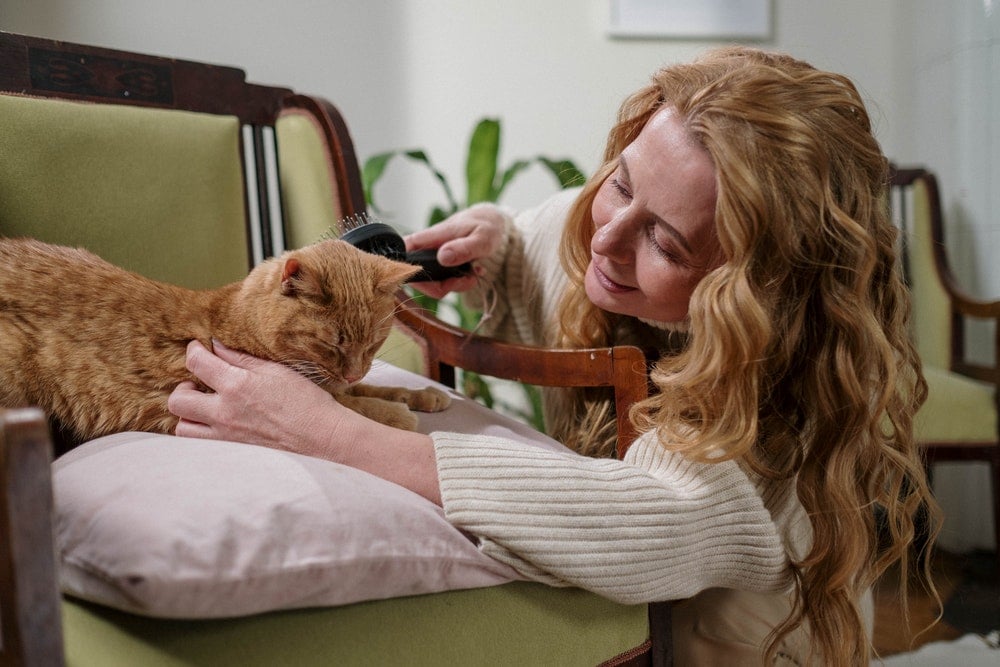
Timing is everything, especially when you’re brushing your cat. You want to brush a calm, relaxed kitty, not an anxious or hyperactive one. So, try brushing your pet when they’re just chilling out with you or maybe taking a nap, rather than when the house is in chaos or your pet has just been climbing the walls. You’ll have much better chances of finishing the job if you pick a calm time.
3. Start Brushing When Your Cat Is Young
If you’re able, it’s best to get your pet used to the idea of being brushed from a young age. That means starting them off with brushing when your pet is still a kitten. Of course, we can’t always do this, and that’s fine too. But starting your brushing routine in kittenhood will get your cat used to the idea of brushing quickly.
4. Use the Correct Brushing Technique
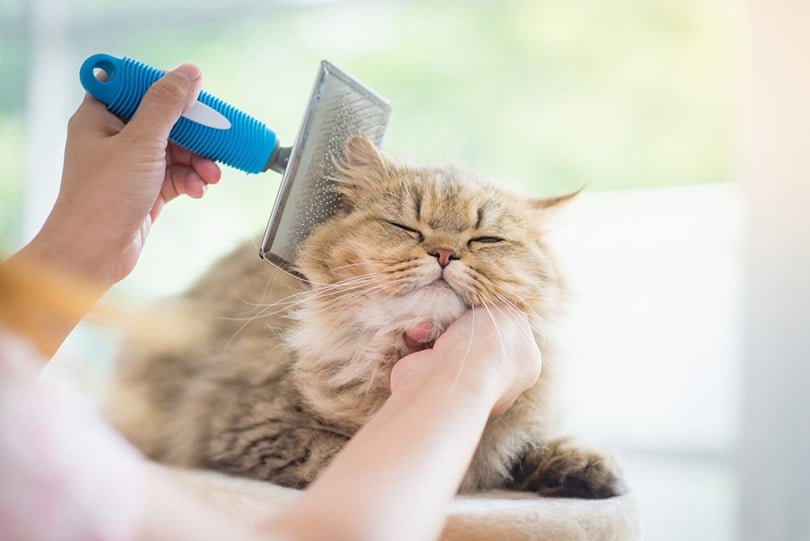
Start at the head or neck (areas cats generally enjoy being brushed) and work your way down to the rear. Don’t brush too fast or too hard, as you could irritate your pet’s skin or frighten them. If you hit a nasty tangle, try getting it out with your fingers before trying with a brush. And if your pet indicates that it’s done with being brushed, let it go; don’t force your cat to continue sitting, as this will just make it dislike brushing even more.
5. Go Slowly
Brushing your kitty is an area where slow and steady wins the race. Start with brushing for only a few seconds, then try working your way up to more time each session. Brushing sessions shouldn’t last longer than a few minutes. Then, you can work your way up to the number of times a week you need to brush your pet. How long your cat’s coat is will determine how often you brush them—short-haired cats generally need weekly brushing, while long-haired cats require daily brushing.
6. If All Else Fails, Break Out the Cat Treats
There’s no shame in using bribes! You may need to start with the brush on the floor next to some cat treats, then hold the brush, and so on. It can be a slow acclimatization process that may take a couple of weeks. Lick mats are also useful to keep your cat otherwise occupied.

Final Thoughts
Brushing your cat can be a chore when they dislike it so much, but with this step-by-step guide, you should be able to get your kitty to enjoy the act. Then, you’ll both be able to enjoy the benefits of brushing, such as reducing shedding, bonding, and lessening the chances of hairballs. One of the most significant contributors to how well your feline will handle being brushed will be the type of brush used, so ensure you get one that works best for your pet (and consider starting with a grooming glove or curry brush)!
Featured Image Credit: Africa Studio, Shutterstock
